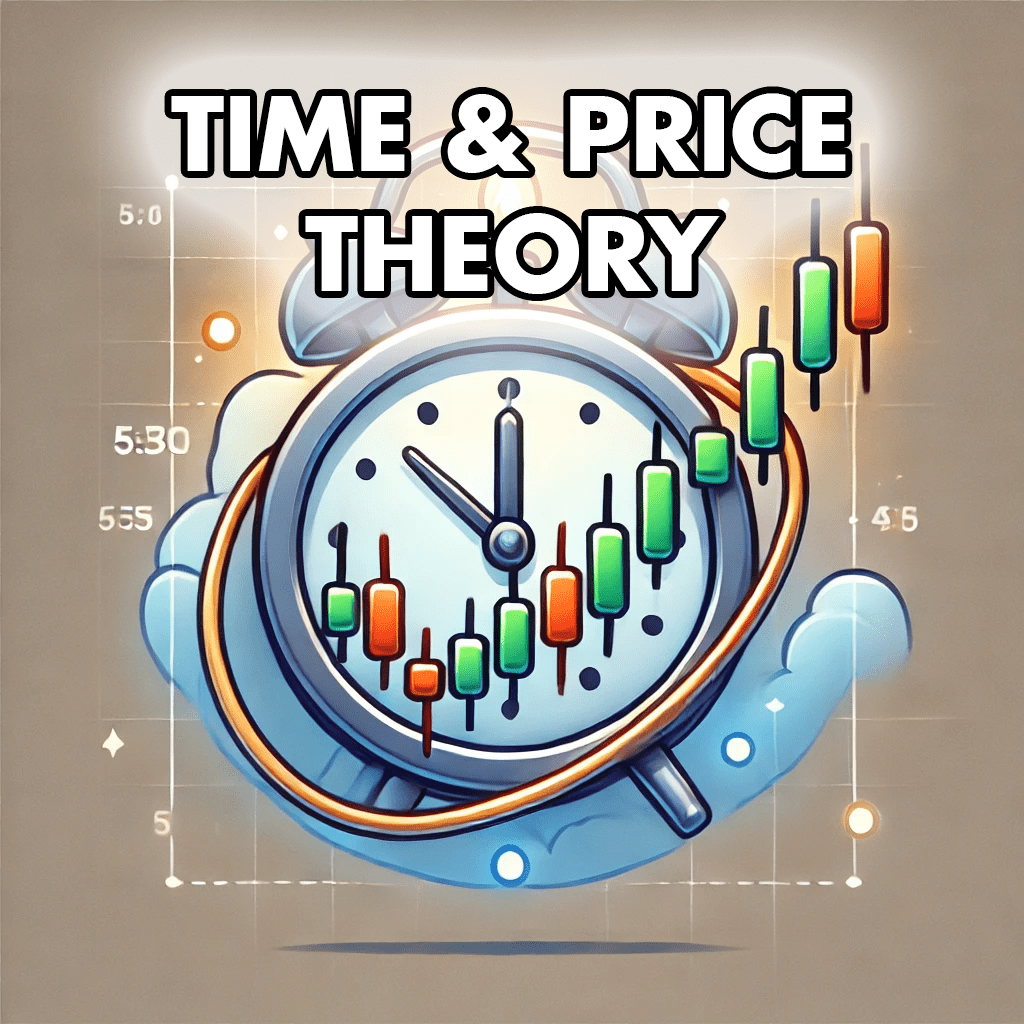Time and Price Theory: Unlocking ICT Secrets of Market Timing
Table of Contents
Toggle
What Is Time and Price Theory?
Time and Price Theory is a concept in trading that emphasizes the importance of understanding when and where the market is likely to move. This theory is a cornerstone of ICT (Inner Circle Trader) Concepts, which teaches traders to analyze the market using institutional strategies. In this approach:
- Time refers to the specific periods when the market is most likely to make significant moves.
- Price refers to the key levels where liquidity resides, often targeted by institutional players.
By combining these two elements, traders can align their strategies with smart money movements, improving accuracy on their entries and exits.
Why Time and Price Are Crucial in Trading
Understanding time and price is vital because it helps traders:
- Avoid Random Entries: Trading without considering time and price often leads to poor entries and unnecessary losses.
- Align with Institutional Moves: Institutions operate at specific times and target precise price levels, creating opportunities for traders who can identify these patterns.
- Improve Risk-Reward Ratios: Knowing when and where the market is likely to move allows for more precise entries and better trade management.
Whether you subscribe to the idea that an algorithm controls the market or just regular buying and selling pressure, you can’t deny that tim plays a pivotal role in trading. Trading during times when there is more likely an injection of volatility provides the higher probability or capturing trades that actually move.
Key Components of Time and Price Theory
1. Timing in the Market
Timing refers to identifying the periods when the market is most likely to experience high volatility and significant movements. These times often coincide with killzones, such as:
- London Open (2:00 AM – 5:00 AM EST): High activity as European markets open.
- New York Open (8:00 AM – 11:00 AM EST): Overlap between London and New York sessions creates volatility.
- Asian Session (7:00 PM – 10:00 PM EST): Lower activity but provides early setups.
Tools for Timing:
- ICT Killzones: Highlight the most active trading times.
- Economic Calendars: Key news releases often drive significant market movements.
- Seasonal Tendencies: Likelihood of the pair you trade moves in a specific direction based on historical data.
2. Price Levels in Trading
Price refers to the key levels in the market where liquidity pools, order blocks, and fair value gaps exist. These areas are targeted by smart money to execute large orders without significant price impact.
Key Price Concepts:
- Liquidity Pools: Areas where clusters of stop-loss and pending orders reside.
- Order Blocks: Zones where institutions have entered positions, often revisited by price.
- Fair Value Gaps (FVGs): Imbalances in the market where price is likely to return.
Combining timing and price levels allows traders to predict not just where but also when the market will move.
How to Use Time and Price Theory in Your Trading Strategy
Follow these steps to incorporate time and price theory into your trading:
Step 1: Analyze the Market Structure
Identify the overall trend and key levels such as support, resistance, liquidity pools, and order blocks.
Step 2: Determine the Optimal Time to Trade
Focus on ICT killzones or times when economic news releases are expected. These periods are most likely to offer high-probability setups.
Step 3: Identify Key Price Levels
Mark areas where price is likely to react, such as:
- Liquidity zones.
- Order blocks.
- Fair value gaps.
Step 4: Wait for Confluence
Combine timing and price. For example:
- Price reaches a key level during a killzone.
- Price action confirms the move (e.g., break of structure or candlestick patterns).
Step 5: Execute the Trade
Enter the trade with a stop-loss placed just beyond the liquidity zone and a take-profit at the next significant level.
Common Mistakes When Applying Time and Price Theory
- Trading Outside Key Times Avoid trading during low-volatility periods as they often lead to choppy price action and false signals.
- Ignoring Market Structure Time and price theory is most effective when used in conjunction with a clear understanding of the market structure.
- Overcomplicating Analysis Keep it simple. Focus on high-probability setups where time and price align naturally.
- Poor Risk Management Always use proper risk management. Even the best setups can fail.
Conclusion: Mastering Time and Price Theory
Time and Price Theory is a transformative tool for traders looking to align with smart money movements. By understanding when and where the market is likely to move, you can increase your trade accuracy, avoid unnecessary losses, and achieve consistent results. Incorporate this theory into your strategy by focusing on key times (killzones) and key price levels (order blocks, liquidity pools, fair value gaps). With patience and practice, you can master this essential concept and elevate your trading to the next level.
Private Coaching
If you’re ready to take your trading skills to the next level and learn how to apply ICT concepts such as Time and Price Theory in real-time, book your free discovery session with me today! We’ll discuss your goals, create or assess your current trading system, and develop a personalized plan for you to become a consistent and successful trader.
